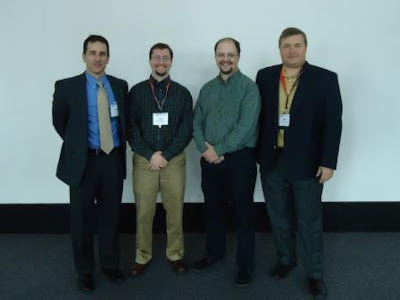
This year I stumbled across this new blog which started just last December. Jon is the owner and operator of Lean for Everyone, located in Farmington Hills, Michigan, working to help teach new and small companies how to use Lean Six Sigma in their workplace.
I am a new reader of Jon’s posts and became an instant fan. The first thing I noticed about Jon’s posts are his long, intriguing titles that grab hold of you and draw you into his lean story. Many of his posts are inspired by daily activities in his life centered on his home which many us can relate while drawing some excellent lean learning. With a biotech background, entrepreneur spirit (he invented and patented Scented Pen) and the skill to make twist balloon animals (not kidding), you can imagine the cool insights and different perspective bursting from his mind and found in his lean posts.
Here are a few of his best for 2010.
Lean on TV: Kitchen Nightmares – Gordon Ramsay from Hell’s Kitchen a change agent?
Jon Wetzel describes the rapid restaurant improvement event steps that Gordon Ramsay uses to save a struggling restaurant from extinction. If you overlook the not-so-shy, in-your-face confrontational style of Mr. Ramsay, you learn that his recipe for improvement is actual quite appealing.
Lean for Health: I’m performing a kaizen on myself at MyFitnessPal.com
Jon Wetzel writes a series of posts on his personal fitness improvement journey using MyFitnessPal.com highlighting the helpful visual controls found on this website.
Lean for the Home: 4 Simple Steps to Doing a Red Tag Event in Your Closet
Jon Wetzel provides a simple, visual method for seeing the waste in our closet of clothes that we no longer wear.
Lean for Home: Creating an emergency checklist for when the power goes out
Jon Wetzel illustrates the power of the simple checklist and standard work as applied to a home emergency.
5 lean things your accounting dept. can do immediately to help cash flow
Jon Wetzel provides a few simple and effective ideas for our accounting department to look at their procedures with an eye for improvement.
Lean Biotech: I got to dumpster dive in Pfizer’s supply closet. It was not a Lean place
Jon Wetzel connects with his inner Indiana Jones as he pilfers through the abandoned supplies of a closed Pfizer facility, piecing together the remnants to tell the story of their not-so-lean supply chain practices.
Please be sure to continue reading Jon Wetzel’s Lean for Everyone in the future and comment on his posts.




















